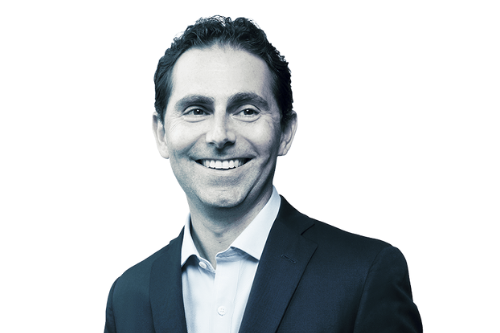

The insurance industry has not been spared from the massive disruption caused by the COVID-19 crisis. Many emerging markets’ growths have been side-tracked by the pandemic, while mature markets, many of which have already been experiencing flat growth or economic slowdowns for the past several years, remained in the doldrums.
Despite several roadblocks, global recovery from COVID-19 continues moving forward, and insurers should be ready to seize opportunities that are present.
According to Brad Mendelson, senior partner at McKinsey, the largest changes in the last two years were driven by COVID-19 and the resulting low interest rates.
“COVID-19 has disrupted the agency and bancassurance channels – which have historically relied on in person contact,” Mendelson told Insurance Business. “In response to this disruption, carriers have accelerated responses from two fronts. First is digitisation of traditional agency and bank channels. The agency model will evolve from one of physical push to omnichannel pull and there is an increasing need for highly personalized financial advisory among calls for hybrid customer journeys to drive engagement and conversion which is powered by analytics. Data and analytics are also key to bancassurance growth in Asia as part of its evolution to a financial wellness platform.”
Mendelson also identified changes in partnership distribution. Carriers are now more likely to experiment with partnership-driven distribution. These partners include telecommunications companies, online retailers, mobility companies (e.g. Grab, Gojek), and healthcare providers.
Insurers now embed simple insurance products in their partners’ customer journeys to deliver insurance targeted at customer needs, Mendelson said. They are also learning how to conduct joint marketing with partners to attract customers and how to cross-sell higher-value products to these customers after the first sale.
“Low interest rates have resulted in a re-evaluation of the product portfolio,” Mendelson said “There have been important shifts in the product offerings and pricing. Some carriers have removed products from their shelf, while others have re-priced them given the low rates. However, all are shifting towards protection and away from savings and investment where they can. If rates remain low for any longer, we will see a more fundamental shift.”
Following natural catastrophes, it’s commonly said that communities must “build back better”. The same is true for insurance following the disruption caused by the pandemic. To achieve this, insurers must capitalise on the opportunities that have been presented, three of which have been identified by Mendelson.
1. The link between health and insurance
The COVID pandemic has shown the critical importance of a well-functioning healthcare system. According to Mendelson, the industry now has the opportunity to make health insurance more comprehensive and link it with physical healthcare.
“Today’s health insurance products are predominantly simple, fixed benefit products,” he said. “As customers get wealthier and healthcare systems further develop, they will want more comprehensive products that include reimbursement for services, access to specialists and preferred provider networks. The health and wellness digital platforms and ecosystems can only go so far as an online platform. The most successful health ecosystems are linked with offline services such as drug delivery, appointment scheduling, preferred provider access, medical record management, claims reimbursement, etc.”
A report by McKinsey, titled Will Asian insurers make the right choices for health insurance?, said that insurers must reimagine their value propositions and operating models in a post-pandemic world. This includes introducing well-being as a core value proposition, building scale for competitive advantage and creating end-to-end consumer journeys that enable both online and offline engagement.
2. Building capabilities to make digital partnership distribution work
E-commerce was already growing by leaps and bounds before 2020, but the pandemic further accelerated its growth, with roughly 4 billion people buying products online as of this year. Insurers have increasingly partnered with companies in various industries to distribute their products. According to McKinsey, digital platforms provide an affinity group with meaningful triggers and data to distribute insurance products.
To capitalize on these partnerships, Mendelson said that insurers should create a seamless omnichannel experience aided by fully digital channels, a digital leads generation engine and the use of innovative thematic campaigns.
3. An agile operating model
Insurers now have an opportunity to adopt an agile operating model that encompasses various dimensions, Mendelson said. For many traditional insurance carriers, launching a new product can take up to several months using the old, centralised model. Business disruption and ongoing digital transformation efforts now allow insurers to break silos and move beyond singular agile teams to reap the full benefits of enterprise-wide agility, according to a McKinsey report, titled Scaling agility: a new operating model for insurers. The report found that agile companies showed superior operational, health and financial results. Time to market was five to seven times faster, productivity increased by 20% to 30%, and customer satisfaction score increased by 20 to 30 percentage points. Employee engagement score also increased by up to 25 percentage points.
“Our studies suggest that the traditional industry boundaries will melt away, lines between life and health insurance and healthcare and asset management will start to blur,” Mendelson said. “Customer needs will change to cross artificial industry boundaries and companies will have to respond. Their needs will also include quality healthcare, wellness services, and an ability to pay for it or protect their families from unexpected medical bills. This requires health insurance, digital health and wellness services, and physical health and wellness services. Customers’ needs will also include the need to grow their assets and save for retirement. This requires financial vehicles with high risk adjusted returns, appropriate tax treatment, and liquidity or flexibility. Carriers that provide only part of these solutions will get left behind.”
